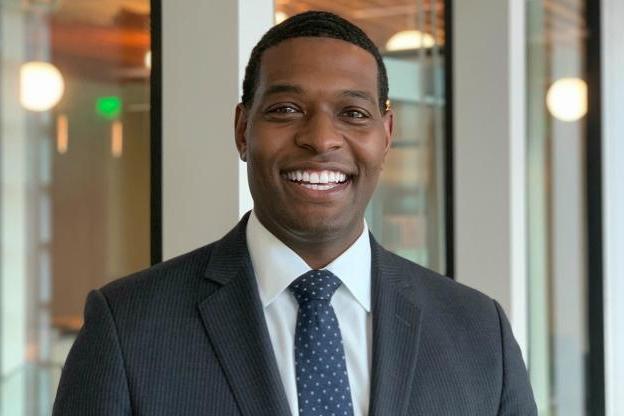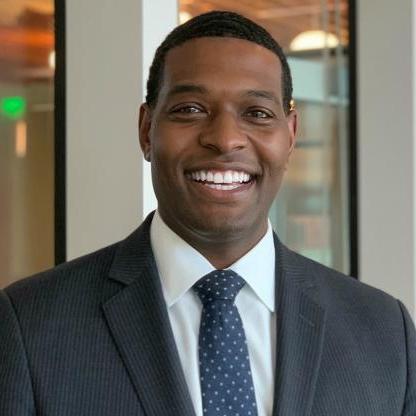2020 in Review - The Most Popular Stories on TriplePundit


While the harsh realities much of 2020 has wrought upon us are poised to continue for several months into 2021, few of us will feel wistful about winding up this year. But it wasn’t all bad news: We took a look at 2020 in review to see what articles were the most popular with our readers on TriplePundit the past 12 months – the following articles are what clearly resonated with you.
It’s the End of Recycling as We Know It (Tina Casey)
Yes, 2020 has been a horrid year for many reasons. But new developments in technology are one reason for optimism.
As 3p’s longtime writer Tina Casey pointed out this spring, the recycling sector can emerge stronger and more resilient than before the pandemic – even if importing recyclables to China is no longer an option. New technologies will be the key, however, if we can become successful in tackling the mounting waste problem.
Ocean Plastic Bike Grips: Another Step Toward a Circular Economy (Roya Sabri)
The oceans have long been at a tipping point, and it’s clear that catastrophe awaits if we keep allowing tons of plastic waste to end up in our seas. As society seeks solutions for reversing this crisis, it’s clear we need ideas, so Roya’s article clearly struck a chord. “Small steps like reconfiguring a bike grip can make ripples toward circularity in the global business community not only through the waste captured and reused, but also by putting these issues at the forefront,” she wrote in May.
Taco Bell Drops Potatoes from Its Menu, and Vegetarians Raise Hell (Leon Kaye)
Yes, there was a lot of bellyaching on Twitter over this decision, but as I explained, Taco Bell’s decision summed up what a lot of restaurants faced as they had to shift to a model driven by deliveries and, of course, drive-thru. “Taco Bell has had to pivot quickly during this pandemic, which thereby comes with supply chain disruptions, dining room closures, and the need to take on new health and safety precautions,” I said over the summer.
Professional Sports Leagues Finally Step Up for Black Lives Matter (Tina Casey)
“As the Black Lives Matter movement begins to fade out of the mainstream media’s headlines, professional sports leagues and individual players are taking actions to ensure the issue of police violence against Blacks in America remains in the public eye throughout the summer,” Tina wrote in August. This was among several articles Tina and other 3p writers wrote about how professional sports team owners and players showed the business community how to get it done when it came to pushing for social justice.
As Wages for Many Essential Workers Flatten, Lowe’s Issues Third Round of Hazard Pay (Ellen R. Delisio)
“Essential workers” became part of our lexicon this year, in part because within the retail sector, many companies were dragging their feet when it came time to compensate their employees commensurate with the risk they endured day after day. Clearly, many out there were searching for some positive news; hence this story about Lowe’s offering another round of bonus pay to its employees caught readers’ attention this summer.
Pebble Mine Decision Hints at New Ally for Corporate Environmental Activism (Tina Casey)
We’re proud of the coverage here on TriplePundit when it comes to the intersection of the Black Lives Matter movement, the inequities COVID-19 has further unmasked and how both are intertwined with the climate crisis.
Nevertheless, huge sustainability stories have still occurred pandemic or no pandemic, including this decarbonization decision the U.S. Army Corps of Engineers reached earlier this month. And, this story is another fine example of how Tina will take on a big environmental news story and break it down to explain why it matters to the business community.
Ecological Balance Means Less Risk of Diseases Like COVID-19 (Nithin Coca)
Lost in all the news about this crisis – from the pandemic deniers who called it the “China virus” to the anti-maskers to those who keep traveling as if there’s nothing amiss – is the fact COVID-19 is yet another virus that has a connection to how our society has hugely disrupted nature, especially from trafficking wild animals or relying on factory farms for food.
“It’s time to transform our relationship with nature into a more positive one that is less exploitative and creates more understanding of the value to human health — and the economy — of a resilient natural world,” Nithin concluded.
Palm Vs. Coconut Oil: What's the More Sustainable Choice? (Nithin Coca)
It’s been a trendy choice, even if it turned out that no, last-based saturated fats aren’t really that good for you, either: Coconut oil has long been viewed as beneficial for not only for the environment, but human health, too. The product has become a popular cooking and cosmetic choice, appearing on more and more shelves and ingredient labels. So, is it a viable substitute for palm oil, an ingredient that has scored more criticism (including here on 3p) as it became a mainstay in more food and consumer products? Well, it’s complicated. Read Nithin’s deep dive for a refresher.
15 Companies Retooling Their Operations to Fight COVID-19 (Mary Mazzoni)
With COVID-19 now seemingly spinning out of control during this “dark winter,” it’s easy to forget all of the disruptions that unfolded earlier this spring. Many companies stood on the sidelines, then promised to write a check and sought props for what was already clearly table stakes (it’s true, we have the receipts, i.e. the story pitches). Other companies rapidly stepped up and started to make masks, PPE, hand sanitizer and life-saving medical equipment - Mary highlighted 15 of them.
How Companies Can Integrate Racial Equity into Their Business NOW! (Cecily Joseph)
“As we all take a closer and more intentional look at how we are going to make progress in this fight for racial equity and justice, I would like to offer some thoughts on how a company should go about addressing racial equity in the near term, a blueprint of sorts,” wrote Cecily Joseph, who serves as Chair of the Net Impact Board of Directors and Advisor and is the former Vice President of Corporate Responsibility at Symantec.
The numbers showed many of you listened and booked marked this article after we published it in June; Cecily suggests a 4-part approach for following through on a strong and authentic corporate diversity strategy. Let’s hope her advice was taken to heart.
Editor’s note: TriplePundit will published at a much lighter schedule for the rest of the year, as much of the staff will be taking some well-deserved time off. Thank you for your support, and we’ll resume our regular publishing schedule the week of January 4, 2021. Happy Holidays and definitely we're hoping for a Happier New Year!
Image credit: Immo Wegmann/Unsplash
'Play to Learn' Humanitarian Response Introduces Rohingya Muppets to Sesame Street


Noor (short for Noor Yasmin) and Aziz are two of the newest members of the Sesame Street family. Introduced earlier this month, the six-year-old Muppet twins are modeled after Rohingya children living in Cox’s Bazar in Bangladesh - the world’s largest refugee camp - and aim to become teachers and friends.
“Noor and Aziz are at the heart of our efforts to bring early education and learning through play to children and caregivers affected by the Rohingya refugee crisis, who have been impacted tremendously by the dual crises of displacement and the COVID-19 pandemic,” Sherrie Westin, President of Social Impact for Sesame Workshop, said in a press statement.
“These are two very special Sesame Muppets—for most Rohingya children, Noor and Aziz will be the very first characters in media who look and sound like them. Rooted in the rich Rohingya culture and informed by extensive research and input from Rohingya families, Noor and Aziz will bring the transformative power of playful learning to families at a time when it’s needed more than ever before,” Westin added.
The need for Rohingya children to thrive in a decades-long refugee crisis
The Rohingya people have faced decades-long discrimination, targeted violence and statelessness in Rakhine State, Myanmar. Many have found temporary shelter in Bangladesh. Since 2017, over half of the 745,000 Rohingya who have fled to Cox’s Bazar have been children, according to the United Nations Office for the Coordination of Humanitarian Affairs (OCHA).
In such a protracted crisis, families, and especially children, need more than basic humanitarian aid to grow and succeed in their endeavors. The U.N. Refugee Agency (UNHCR) estimates that 61 percent of the world’s refugee children attend primary school — in low-income countries stooping to less than half. Secondary school enrollment drops even lower. These numbers matter to more than the Rohingya. They point to significant populations of undereducated children and young adults.
Diminished education can be measured in economic impact, the Organization for Economic Co-operation and Development (OECD) found in its recent study on education during this year’s pandemic. The study identified that a learning loss of one quarter during the crisis could result in an almost two percent decrease in GDP in 2100.
An “all out push on a massive scale” for refugee early education
Sesame Workshop’s multifaceted program aims to protect refugee families from long-term, long-range consequences, by providing a basic educational need for children up to the age of six. More than a year in development, Noor and Aziz are part of the not-for-profit’s Play to Learn humanitarian initiative that reaches Rohingya children through a partnership with the NGOs International Rescue Committee (IRC) and Bangladesh-based BRAC. The initiative is also supported by New York University’s (NYU) international research center Global TIES for Children and the LEGO Foundation.
The principle behind the program is to bring learning and healing to displaced children through play. In the show, Noor and Aziz (beside other familiar Sesame Street characters such as Elmo) teach children about math and science, as well as social-emotional well-being and health and safety, writes Sesame Workshop in a press statement, adding that the lessons are founded on five characteristics of “playful experiences” that prepare the ground for learning: joyful, meaningful, actively engaging, iterative and socially interactive.

“Learning through play also helps children to develop the holistic skills, including creativity and social-emotional skills, which are vital to survive and thrive in this rapidly changing world,” Sarah Bouchie, Chief Impact Officer at the Lego Foundation, which has granted $100 million to Play to Learn initiatives, said in a press statement.
These lessons reach the children through BRAC’s infrastructure, its Humanitarian Play Labs and direct services. During the pandemic, BRAC and IRC outreach workers adapted services to include regular phone call check-ins, as well as audio, written and poster content specific to coronavirus-related needs. In the new year, facilitators will be trained, and video segments, storybooks and printed educational materials will be integrated into direct services, writes Sesame Workshop in a press release.
Earlier this year, Sesame Street aired a new show in Arabic called Ahlan Simsim, translated Welcome Sesame, for Syrian children displaced in Syria, Iraq, Jordan and Lebanon. By implementing yet another program in the same year, Sesame Workshop demonstrates its lack of hesitation in expanding its refugee response. “It’s an all-out push on a massive scale,” the nonprofit explains on its website. “Because an investment in these children is an investment in a more peaceful and stable world for everyone.”
Developing a model for child-focused humanitarian aid
Sesame Workshop has estimated that its programs for Syrian refugees could reach 9 million children and families at scale and has called Play to Learn the largest early-childhood intervention of any humanitarian response.
“One of the big gaps in humanitarian assistance for so long has been that only about 3 percent of humanitarian aid goes to education, and of that, only a tiny fraction goes to early childhood education,” Scott Cameron, the executive producer of the Ahlan Simsim, told Fast Company in January. “As a global community, we need to figure out ways to really create new models to help children in need in these crisis settings.”
To continue developing and scaling their approach, Sesame Workshop and its partners are testing their educational methods for the first five years to determine what tools and strategies work best and connect with kids. The study will double the amount of evidence available concerning which early education programs are most effective in crisis situations, Sesame Workshop writes on its website. The data will be shared with the humanitarian community so as to ensure progress continues and does not rest solely on the backs of Muppets.
“We look forward to sharing our findings with the entire humanitarian community so that we - and others - can better reach and teach the world’s most vulnerable children,” Sherrie Westin, President of Global Impact and Philanthropy at Sesame Workshop, said in a press statement from NYU.
Image credit: Sesame Street/Facebook
Need a Lyft to Get Your COVID-19 Vaccine? Millions Could Answer Yes


The rollout of the COVID-19 vaccine is already facing numerous challenges.
First, there’s allaying doubts about the vaccine, understandable considering the darker episodes of vaccine experiments in U.S. history. Then, we’ve got the question of fairness, as some members of Congress who questioned the seriousness of the pandemic have already scored the first of their two necessary shots. Stories about wealthy Americans determined to cut in line are also sowing concern. Plus, there’s another dilemma — the moral conversation of why many of the world’s poorer nations could face years until their citizens get inoculated.
One way to gauge whether the COVID-19 vaccine is distributed fairly and equitably across the U.S. could hinge on the success of a multi-stakeholder program announced yesterday.
Lyft, specifically the health care transportation arm of the U.S. rideshare giant, said it has kickstarted a national campaign to help secure universal access to the COVID-19 vaccine. The company will partner with a wide range of organizations, including JP Morgan Chase, Anthem and the United Way. The goal is to provide 60 million rides if needed — remember, we’ll all need to receive the vaccine twice if we are to achieve herd immunity and knock out this virus.
For now, the program promises to involve many moving parts. The list of questions includes how to transport the most vulnerable, underserved populations to the clinics and retailers that have promised to be part of the mass vaccination effort. Further, Lyft needs to sort out how many of these rides will be free or subsidized. In fairness, the company can’t provide all these rides at no cost or at a discount, so all the partners in this effort will have to figure out how to collect donations from either companies or individuals. After all, Lyft’s drivers — who at a minimum rely on ridesharing to supplement their incomes — will have to be paid.
“Access to reliable transportation represents a major barrier to care for millions of Americans across the country,” said Lyft Healthcare’s Megan Callahan in a public statement. “In fact, lack of transportation is one of the top reasons people miss medical appointments. The COVID-19 pandemic has exacerbated this problem, creating a huge challenge in making sure vulnerable populations have access to the vaccine — especially for seniors living alone, low-income workers and parents with young children. We estimate that 15 million Americans will face transportation issues trying to get to vaccination sites. That’s where Lyft can make a difference.”
Additional organizations and businesses that have reportedly signed up for this effort include Centene Corporation, Epic, Modern Health, National Asian Pacific Center on Aging, National Hispanic Council on Aging, the National Urban League, National Action Network and One Medical.
Image credit: Pexels
The Global Food System Risks Crushing Natural Habitats Worldwide


Many of us are already aware of the many hurdles facing the global food system as it seeks to feed 10 billion people by 2050 while harnessing fewer resources and ensuring minimal land use. The worldwide COVID-19 pandemic has made the food and agriculture sector’s challenges even more apparent as more citizens confront food insecurity.
But even if a crisis can lead to an opportunity, the companies driving the global food system have a huge learning curve coming in the years ahead if we as a society are going to produce enough food without mowing down the planet’s landscape. Human rights activists have long been concerned about the impact the quest for more farmland has had on Indigenous and poorer communities. Emissions linked to agriculture are another culprit food and beverage companies need to confront in the coming years.
Concern should also be focused on natural habitats, according to a study released this week in the journal Nature. The group of researchers who teamed together on this article concluded we can expect to see millions of square miles of lands rich in biodiversity disappear by 2050.
After evaluating the habitats of almost 20,000 species, researchers found almost 90 percent could see the land on which they roam become lost to farmland by mid-century; almost 1,300 could lose more than 25 percent of their natural habitat.
“Until we start addressing what we eat, how it is produced and everything in between, we're not going to make wide-scale progress towards existing conservation and biodiversity targets,” said Michael Clark, an environmental sustainability researcher at the University of Oxford and one of the study’s co-lead authors, in an interview with The Independent.
For food companies managing global supply chains that also say they are committed to preventing biodiversity loss, this study adds another layer of complexity to their sustainability agendas. The study’s authors made it clear that there is no one-size-fits-all approach to managing the globe’s food supply in the coming years. Various tactics such as decreasing meat and dairy consumption, tackling food waste and finding new ways to boost crop yields are all on the table.
The surging interest in plant-based protein in North America, for example, could help manage such a problem on this side of the pond, but such a shift will go for naught in regions where meat consumption has long been quite low and food insecurity looms as a constant threat. Conversely, talk about increasing yields in regions such as sub-Saharan Africa — where evidence suggests such a shift is already occurring — makes sense. But several time zones away, U.S. farmers have largely won that battle over the past few decades.
Some food and beverage companies are currently making the moves necessary to secure a more sustainable supply chain. It’s clear, however, that the time to rethink our global food system was yesterday — and companies and their suppliers will have to consider a wide range of strategies in order to be up to the task of growing more food with minimal destruction.
Image credit: PxHere
Where Biden and Trump Can Agree — a Thriving Domestic Energy Storage Sector


Though President Donald Trump and President-elect Joe Biden have fierce disagreements in many areas, the energy storage industry is one that they both enthusiastically support. The Trump administration launched the Energy Storage Grand Challenge earlier this year to bolster American leadership in the battery sector, while Biden has featured domestic battery manufacturing as a frequent talking point for how America can address climate change while still focusing on job creation. They both have explicitly identified a secure domestic supply chain as a critical component of an American battery industry.
A path toward scaling up renewables across the U.S.
The energy storage market is expected to grow to $30.4 billion with 52.5 gigawatt hours in installations by 2023. Global electric vehicle (EV) sales are also expected to skyrocket, growing from 2.5 million sold in 2020 to over 31 million by 2030. Tapping into this market opportunity and establishing a domestic supply chain offers the potential to create millions of jobs; develop more American-made products; and make a sustainable future using renewable energy resources more accessible — a key focus in Biden’s climate plan.
In order to establish a domestic supply chain that can support a strong energy storage sector, the U.S. will need to break free of its dependence on China for both processed battery materials and fully built batteries. As it is, China produces the majority of the world’s batteries while producing an even greater majority of the materials that go in them. To achieve the bipartisan goal of a strong domestic battery industry, the U.S. needs innovation — beyond the standard lithium-ion battery — to build new designs that leverage materials sourced right here in North America.
U.S. climate ambitions depend on access to scarce materials
Biden has set a goal of a completely decarbonized electrical grid by 2035. California Governor Gavin Newsom has also banned the sale of new gas-powered vehicles beyond that date as well. Lithium-ion batteries are critical for both of these ambitions — they power the EVs that replace gas cars, and they store renewable energy when it is abundant for later consumption. Lithium mining in America is practically nonexistent, and the processing of lithium into battery-grade chemicals is similarly limited. China produces most of the world’s battery-grade lithium chemicals in addition to the majority of the world’s batteries.
The recent trade war highlighted risks in the long-term trade relations between the U.S. and China. The pandemic further highlighted the risks that dependence on a global supply chain pose for critical infrastructure. In addition to both of these risks, the rapid increase in demand for batteries has not been met with a similarly rapid investment in mining and processing of raw materials. Most industry analysts expect widespread shortages of critical lithium-ion materials by mid-decade.
New battery technologies can bolster America’s climate ambitions. Lithium-ion batteries were designed for highly portable applications. While this makes them a good fit for cars, it offers little value for the stationary energy storage required by the electrical grid. To empower a domestic battery supply chain, the Biden administration should identify lithium-ion alternatives that are capable of meeting or exceeding performance while using inexpensive and domestically abundant materials. One such promising alternative is the zinc-ion battery.
Creating a scalable, domestically available alternative for energy storage
Zinc is so cheap and abundant that it is used to make pennies. The other material used in zinc-ion is manganese, which is similarly cheap and abundant. Unlike the materials used in lithium-ion batteries, both materials are produced in sufficient abundance in North America to support U.S. climate ambitions. Since they are water-based, zinc-ion batteries offer the additional benefit of complete and total safety. The result is a safe, low-cost, long-lasting lithium-ion alternative that can easily be built with a secure domestic supply chain. As an additional benefit, zinc-ion batteries use the same manufacturing process as lithium-ion, meaning it is a technology that can be rapidly and inexpensively scaled.
Both the current and incoming administrations understand the value of creating a domestic supply chain for energy storage technologies. Not only is the market opportunity significant but scaling up battery production is critical to meet environmental and economic goals in the coming years. Batteries that are built with more domestically abundant materials — like zinc — offer an alternative that supports this shifting supply chain.
Image credit: Science in HD/Unsplash
Electric RV Drives Shows Potential for a Greener Recreational Future


One of the hardest hit industries during the course of the ongoing novel coronavirus pandemic has been the travel and leisure industry. With rolling lockdown orders, quarantine requirements in various parts of the world, and airline services curtailed due to a lack of demand, the travel industry has seen a huge contraction throughout the year. Could an electric RV help boost the travel industry’s prospects?
A dismal time for the travel industry, with the exception of one niche sector
The U.S. Travel Association’s research shows that November concluded with a $40.2 billion reduction in travel spending, representing a 44 percent year-on-year decline, while warning new surges of COVID-19 cases as the winter season progresses will likely force further declines still.
One bright spot in this gray landscape, however, has been a spike in popularity in the use of recreational vehicles (RVs) for domestic travel this year. Business Insider reported during the summer that 20 percent of U.S. residents surveyed had become more interested in RV travel instead of flying, tent camping, taking cruises or spending vacations in rental properties. A way to stay socially distanced but still allowing families to safely head for a change of scenery, RV rentals spiked by an astounding 1,000 percent in May this year.
Potentially good timing, then, for startup electric truck maker Lordstown Motors and Camping World to announce a partnership to electrify the RV space.
An electric RV in the near future?
Initially, the partnership will focus on building an electrified travel trailer to go on sale by 2022. The trailer will feature on-board batteries to power appliances, replacing the typical fossil-fuel generator. To be clear, travel trailers still need to be towed by a truck, so it’s the planned next phase which offers the potential for full electrification.
In the next phase, the two companies eventually intend to produce a fully electric RV which they will designate as a “Class E” electric RV, which should be considerably more energy efficient than ones powered by internal combustion engines.
Traditional diesel RVs are not exactly miserly with fossil fuels and though mileages will vary by class of vehicle, at the low end, RVers typically have to live with single-digit miles per gallon. Consequently, an electric RV alternative is an exciting proposition - providing the partnership builds something which can cover a decent range between charges. Since campgrounds typically have electric hook-up points at each site, though, presumably the existing infrastructure lends itself to recharging vehicle batteries, too?
A fitting partner for Lordstown
In addition to product development, the partnership dovetails nicely with Camping World centers taking on board servicing requirements for Lordstown Motors’ Endurance electric pickup. This arrangement sidesteps the need for Lordstown to build out its own servicing network and down the line, offers the ability for Camping World to serve as retail locations for Lordstown’s vehicles as well as the partnerships’ electrified trailer and RV.
It seems there is a fair amount of detail yet to be filled in with respect to the specifications of the proposed electric RV that will be birthed from this partnership, though it’s expected that Lordstown will adapt its electric pickup platform to accommodate an RV body. But whatever is in the pipeline, in these dismal times, it’s nice to think that COVId-19 might slingshot one of the few buoyant sectors of the leisure industry into a more sustainable future.
Image credit: Rob Hayman/Unsplash
Why Michael Regan is a Transformational Pick to Head the EPA


The announcement last week of Michael Regan as President-elect Joe Biden’s pick for Environmental Protection Agency (EPA) Administrator was historic: he will be the first Black American man to lead the EPA.
Michael Regan rounds out a heavy-hitting climate team
He will also be an integral part of the first-ever Climate Team, made up of some heavy hitters, including Representative Deb Haaland as the first Native American Secretary of Interior, former Governor Jennifer Granholm as the second woman Secretary of Energy, Brenda Mallory as the Chair of the Council on Environmental Quality, former EPA Administrator Gina McCarthy as the National Climate Advisor, and Ali Zaidi as the Deputy National Climate Advisor.
Beyond the Climate Team, Biden is assembling experts across the administration: from former Secretary of State John Kerry as climate envoy to the announcement the first climate official who will sit on the National Security Council.
Michael Regan is well-suited to lead EPA in tackling tough environmental problems. His resume is impressive, but I make that statement based on my own history with him. I worked with Michael at Environmental Defense Fund for eight years and consider him a friend. His prior work at EPA and his current position as Secretary of the North Carolina Department of Environmental Quality have been rightly highlighted as providing his qualifications for EPA Administrator.
Beyond those qualifications, however, my time working with him showed me what a clear goal of inclusion and equity can do for helping to achieve climate goals, especially done with determination, intellect and empathy. Michael has all of those qualities in abundance.
Another step toward engaging communities of color
In 2008, the year both Michael and I joined the organization, EDF launched a program called Climate Corps (EDFCC), which embedded MBA students in companies to find energy efficiency savings. It quickly became one of the most successful projects at EDF. To date, its participants have uncovered $1.6 billion in energy savings, equivalent to 2.2 million metric tons of carbon emissions.
Michael was one of the people that saw EDFCC’s potential reach beyond Fortune 500 companies to the public sector and nonprofits, including Historically Black Colleges and Universities (HBCUs) other Minority-Serving Institutions (MSIs) and municipally-owned and cooperative utilities, many of the latter of which are often in rural areas.
As Jim Marston, former Vice President of Clean Energy at EDF - and Michael’s boss and mine - said, “Michael had the foresight to see that nonprofits and public sector institutions didn’t have the budgets that corporate hosts have to pay for fellows, so he developed a successful fundraising plan to enable EDF to pay for the fellows’ salary and training,” and therefore allow participants who would have otherwise been shut out of the process to participate.
He led the team that started this work, and his passion and drive made it a success. In 2009, the public sector work launched, and within five years, half of the country’s top HBCUs had participated in the program, including Michael’s alma mater, North Carolina A&T University. As an energy efficiency specialist, I was engaged with EDFCC from the early days, and as a former public sector employee myself, I fully supported Michael’s efforts to expand it. I led the team that engaged the first Hispanic-Serving Institutions (HSIs) - the University of Texas at Brownsville and Texas Southmost College and the University of Texas at El Paso.
Michael was determined from the outset that engagements at HBCUs and MSIs drew their EDFCC fellows from their own student body when possible. He recognized that it gave the fellows skin in the game, but it also raised the profiles of the institutions themselves and other students who might consider careers in climate change.
Further, the public sector work expanded from including only MBA students to include engineering and public policy students. This is an important point: engaging students from different backgrounds and with different expertise enables a system where climate change is addressed from multiple angles. It’s necessary because climate change is multi-faceted problem that has implications across the economy. Relying on traditional solutions by traditional actors isn’t enough.
Why the selection of Michael Regan is important
Michael is tough negotiator—as evidenced by his brokering a multibillion-dollar settlement for coal ash cleanup with Duke Energy while Secretary in North Carolina. But like the good parent that he is, he also knows when to pick his battles. He’s pragmatic and inclusive in every sense of the word. When thinking about how to engage others in climate and energy work, not only did he go to HBCUs and MSIs, he and his team also went to African-American churches, public housing authorities and rural cooperative electric utilities.
He recognized that every person in this country has a stake in solving the climate crisis, even if they don’t yet know it. And he also saw that engaging those who will bear the brunt of the impact of climate change aren’t often at the table when solutions are discussed. His work engaging diverse communities not only brings more perspectives in the conversation, but it also sets an example for students who want to work in climate change but may be better suited to jobs other than climate science. And for students looking for role models in positions of influence who look like them.
Another thing that profiles of Michael Regan won’t tell you is that every person who worked for him knew their voices were valued. Every colleague will tell you that he is collaborative, whip-smart, and strategic. Every stakeholder will tell you that he is fair and inclusive. And every friend will tell you that you could have no better person to help lead this country and its people and economy to solve a big environmental challenge with compassion and humor. As Marston noted, “Michael is a special person, not just because of his knowledge about climate science and policy, but that he cares about people—those who work for him and those whose lives are affected by his work.”
Image credit: NCDEQ
Trillion Trees Act is One More Step Toward Bolder Climate Action


U.S. Sens. Mike Braun (R-Ind.) and Chris Coons (D-Del.) introduced the Trillion Trees and Natural Carbon Storage Act earlier this month. The bipartisan legislation aims to advance the nation’s climate action agenda and the preservation of forests.
An improvement in the Trillion Trees Act
The bill comes 10 months after U.S. Rep. Bruce Westerman (R-Ark.) brought the Trillion Trees Act to the House of Representatives and was met with backlash from environmental groups. In response, the National Parks Conservation Association wrote a letter of opposition on behalf of its millions of members and supporters, and Greenpeace pulled together a petition to National Resources Committee Chairman Rep. Raul Grijalva (D-Ariz.). A major criticism of the bill was its supposed greenwashing of the logging industry.
This new bill comes a long way from that first attempt. According to the National Audubon Society, the legislation now includes a more sophisticated system of support for ecosystems and sequestering carbon, including caring for old-growth forests, wetlands and grasslands. It relies on a “net carbon stock” metric rather than a tree count, Audubon writes, and establishes a funding mechanism to support reforestation. While Audubon opposed Westerman’s bill, the organization supports this current legislation, while noting that planting must work in coordination with pollution reduction measures, not as a substitute.
“While it’s true that reforms to other sectors like electricity, transportation, and industry will play a critical role in addressing climate change, we must not forget that important gains can be made through natural solutions like climate-smart forestry,” Michael Obeiter, senior director of federal climate strategy at the National Audubon Society, said in a statement. “We thank Senators Braun, Coons, Young, and King for introducing this bill, which can have a tangible and positive impact for both birds and people in the fight against climate change.”
The benefits of this bipartisan climate legislation
This act relates to a worldwide effort to plant more trees. Just this year, the trillion trees platform was launched during the World Economic Forum Annual Meeting in Davos, Switzerland. The initiative was designed to support global efforts such as the U.N. Decade on Ecosystem Restoration beginning next year, led by the U.N. Environment Program and the U.N. Food and Agriculture Organization.
What measures would this Senate bill instate to support a trillion trees in its own way? Included are an authorized $10 million in support of USDA Forestry Nursery Revival programs to supply seeds and saplings; amendments to international conservation programs to include carbon sequestration and forest management as approved technical assistance; and requiring the U.S. Department of Agriculture (USDA) to establish objectives for increasing the net carbon stock of American ecosystems such as forests, grasslands, wetlands and coastal habitats.
The ecological impetus for replanting? There is a need to replant, not only to restore the forests that burned in wildfires this summer, but also to combat climate change. Research has shown that nature-based solutions such as building up forests and other ecosystems can contribute up to a third of the emissions reductions required to meet Paris Agreement targets by 2030.
The economic impetus for planting extends to the need for a multi-pronged approach to climate action that will bring us to a cleaner and more resilient economy. The costs of inaction are real. Every one degree Celsius increase in average global temperature costs about 1.2 percent in gross domestic product, finds a study published by Science Magazine.
Planting trees, of course, cannot suffice on its own in counteracting climate change
Time, scale, accounting and permanence are some of the challenges to planting solutions that James Temple identifies in his January article in the MIT Technology Review. Time — even common sense must admit that it takes time, decades, for trees to grow to their full carbon sequestering potential. Scale — based on the amount of greenhouse gas emissions the U.S. currently emits, Temple notes the country would have to dedicate an area of land over twice that of Texas to offset those emissions. Accounting — accurately measuring the impacts of reforesting is nearly impossible, and mostly overestimated, even by the United Nations, Temple writes. Permanence — as we saw this year with widespread wildfires, trees are not necessarily a perennial carbon sink, and when a tree burns, all the carbon that was stored returns right back into the atmosphere.
Thus, the importance of not just offsetting emissions, but reducing them — developing new needed technologies for the clean energy sector and implementing them, promoting best practices in agriculture, transforming transportation, reducing waste — there is so much to do, and there is no quick fix.
Image credit: Jason Leem/Unsplash
More Than a Nasdaq Proposal Is Needed for Diversity in Corporate America


In the future, the year 2020 will be remembered primarily for COVID-19, the devastating global pandemic that ran rampant for most of the year. But we’ll also recall 2020 as the year the United States finally got serious about social justice, starting with diversity.
The coronavirus pandemic has exposed numerous social inequities in our culture. That, coupled with the social unrest sparked by the senseless killing of George Floyd by a white police officer, has resulted in a strong majority of Americans demanding systemic change throughout society, including the corporate sector.
Recent Porter Novelli research revealed that 71 percent of Americans believe companies have more responsibility than ever today to address social justice issues. Moreover, 73 percent say companies need to be willing to take risks to address these issues.
Silence is complicity. Staying quiet on socio-cultural-environmental issues is no longer a viable option for companies. The corporate world must move beyond traditional corporate social responsibility (CSR) programs - which too often have just been glorified public relations efforts – and create actionable and measurable systemic change initiatives.
Lack of diversity remains a large problem
One issue needing attention is the makeup of corporate boards of directors. There is a clear lack of gender and racial diversity on corporate boards of directors. At the 3,000 largest publicly traded companies, underrepresented racial groups make up only 12.5 percent of board seats and women only 21 percent.
Recently, Nasdaq leveraged its influence for a social good. It filed a proposal with the SEC to implement new listing rules, which would require all companies listed on Nasdaq’s U.S. exchange (3249 companies) to publicly disclose transparent diversity statistics regarding their board of directors. In addition, the rules would require listed companies to have – or explain why they don’t have – at least two diverse directors, including one who self-identifies as female and one who self-identifies as either an underrepresented minority or LGBTQ+.
Nasdaq research from the past six months revealed that more than 75 percent of its listed companies currently don’t meet its proposed diversity requirements.
The case for diversity and why it needs to go beyond the public sector
The Nasdaq proposal is great news. But the same diversity initiatives need to be implemented in the private sector. In addition to the proposed rules for companies on its exchange, Nasdaq has also lobbied the SEC to make diversity disclosure a rule for all companies, public and private.
“The ideal outcome would be for the SEC to take a role here,” said Adena Friedman, Nasdaq’s CEO. “They could actually apply it to public and private companies because they oversee the private equity industry as well.”
It’s important to point out that this isn’t simply a diversity initiative. It’s a corporate performance initiative. Numerous studies have shown that companies with diverse boards of directors and executive teams perform better in multiple ways.
Nasdaq’s SEC proposal included an overview of over two dozen studies that found an association between diverse boards and better financial performance and corporate governance.
A 2020 McKinsey report revealed that companies with executive teams in the top quartile of gender diversity were 25 percent more likely to have above-average profitability than companies in the bottom quartile.
Bernile, Bhagwat and Yonker found that greater board diversity correlated with lower stock price volatility and better overall performance.
FCLTGlobal researched firms on the MSCI All Country World Index (ACWI) between 2010 and 2017 and found that the most diverse boards added 3.3 percent to return on invested capital (ROIC) as compared to peers with less diverse boards.
Implementing diversity from top to bottom
It’s also vital that diversity and inclusion initiatives go beyond the boardroom and C-suites, down to entry-level hires, in order to ingrain diversity into the corporate culture. That’s the only way meaningful change will happen in the long-term.
A commitment to diversity, equity, inclusion and justice are pillars at CoPeace, and these pillars support our mission to positively impact society in multiple ways. We believe both social diversity – as in gender, race and ethnicity, religion, sexual orientation and age - and professional diversity are important for maximizing the diversity of perspectives in our company and the companies in which we invest.
Companies that fail to act when it comes to diversity and inclusion will suffer a missed opportunity in terms of company growth, innovation and talent retention.
The events of 2020 have shown that traditional CSR programs aren’t enough to bring about necessary systemic change in corporate America. For companies, both public and private, which claim to be stakeholder-driven and not just shareholder-driven, diversity, equity and inclusion need to be key components of how they systemically conduct business. That must occur from the board level through entry level, if they truly desire to help bring about a more just society.
Image credit: Unsplash
Carbon Removal, Not Only Offsetting, Will Ensure Businesses Reach Net Zero


2020 is the year of net zero. We are at a tipping point for companies (and countries) pledging to get to net zero carbon emissions, with commitments doubling in less than a year, as the world increases its focus to avoid irreversible climate change. The growth in net zero pledges has created unprecedented interest in carbon removal strategies – and interest in what viable and scaled markets for carbon might look like.
The Taskforce on Scaling Voluntary Carbon Markets consultation document, published last month and chaired by the Institute of International Finance, confirms the need to scale voluntary carbon markets, and highlights the importance of removal/sequestration projects as a core part of these markets.
Yet, as leading NGO Carbon180 noted earlier this month, there are a number of notable challenges facing carbon removals as a solution today. Carbon180 points out that it is very time-consuming to find projects and companies with a proven method to remove – not just avoid emitting – carbon from the atmosphere, and so companies face difficulties finding credible carbon removals among all the carbon offset options.
Moreover, companies are expected to meaningfully navigate terms such as emission reduction, avoided emissions, carbon sequestering, storage, usage, and removal. It can be overwhelming, and this confusion can lead to paralysis: no action is taken at all.
Carbon removal vs carbon offsetting to reach net zero
A key issue is that carbon removal is too often confused or combined with carbon offsetting – when in reality, carbon offsetting and carbon removal offer two very different outcomes when it comes to reaching net zero. With offsets, when one metric ton of CO2 is emitted, 1 metric ton of CO2 is avoided elsewhere, which can still lead to a positive increase in emission overall. Through carbon removal, when one metric ton of CO2 is emitted, one metric ton is removed completely from the atmosphere.
This is how we reach net zero. Fundamentally: even if a corporation makes concerted efforts to reduce their own emissions, relying on offsetting to compensate unavoidable emissions does not remove them from the atmosphere.
Organizations such as the Science Based Targets initiative (SBTi), which is developing the first global science-based guidance for companies to set net-zero targets, advises companies to be accountable for their own emission reductions first and neutralize any residual GHG emissions with an equivalent amount of carbon removals.
Indeed, a corporation’s reductions and search for removals really needs to start in parallel in order to minimize the time it takes to reach their net zero moment, when their residual emissions are neutralized with an equivalent amount of carbon removals.
Creating a new carbon market asset class
It’s time for carbon removal to come out from under the shadow of carbon offsetting. Differentiation would lead to a new carbon market asset class, based only on removal, that would grow quickly in liquidity in the carbon markets. The current problem of buyer paralysis due to lack of clarity would be addressed.
Growth in liquidity is imperative because at the moment we are facing a supplier-constrained carbon removal market. All the net zero pledges are raising the pressure to scale up carbon removal, but this industry is still in its infancy. We must boost investment in the form of offtake agreements, a mechanism to channel capital to the suppliers of carbon removal, or carbon ‘transformers’ (as we call them), to enable them to scale faster.
The Taskforce on Scaling Voluntary Carbon Markets consultation identifies that at a minimum, 2 gigatons of carbon removal is needed by 2030. Achieving this requires a 15-fold surge of voluntary action by 2030, compared to what occurred in 2019. There’s a clear argument to scale up carbon removal in the carbon markets. It’s time for governments and businesses to recognize that carbon removal, specifically, is the real key to achieving our net zero targets.
Image credit: PxHere